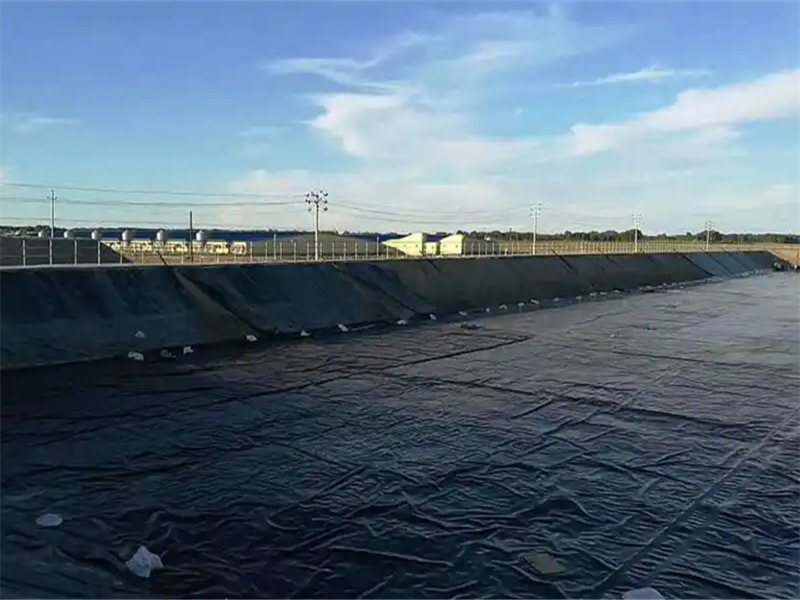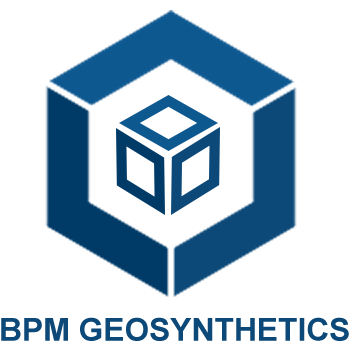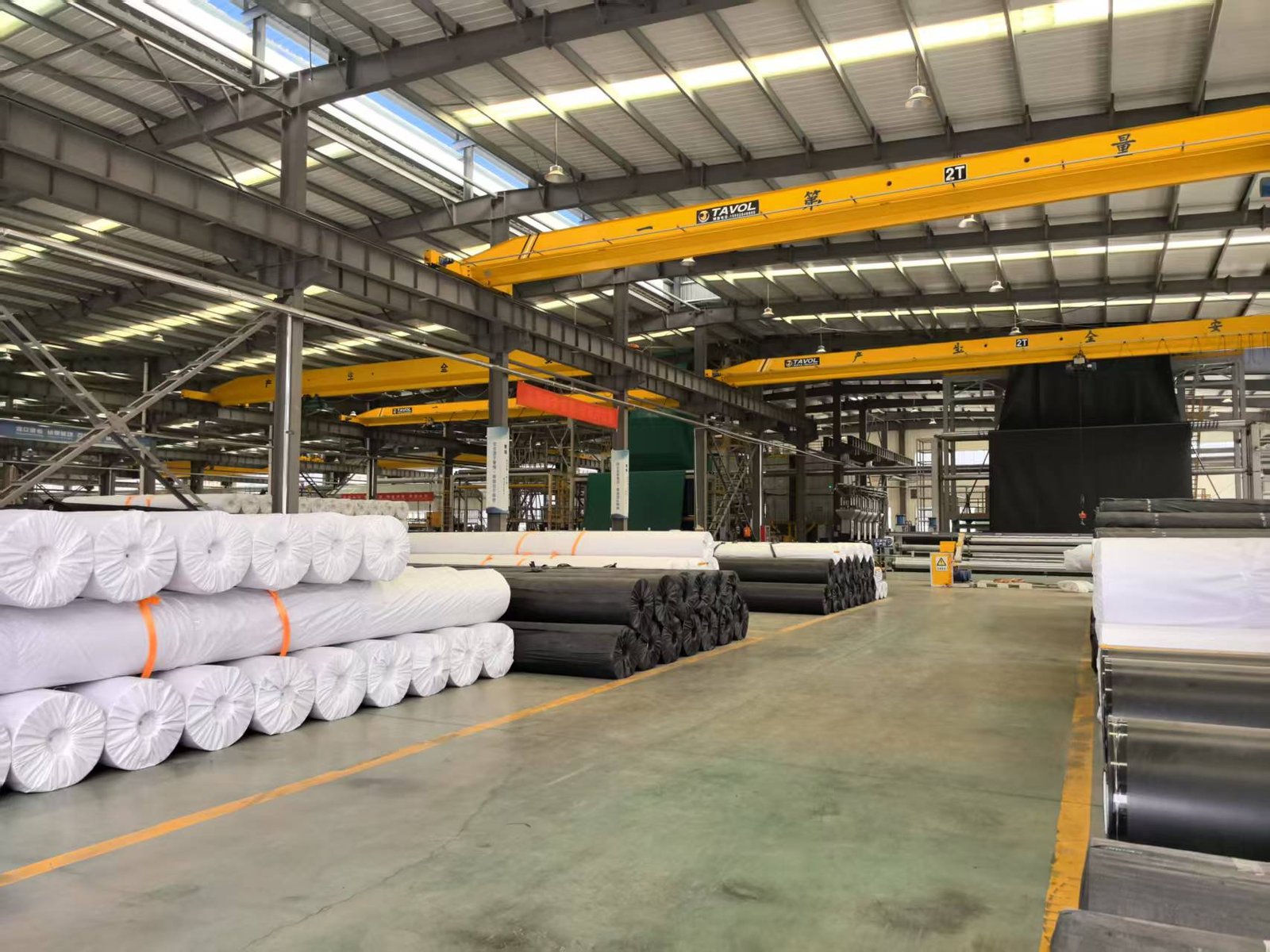In engineering construction, environmental remediation, and other fields, geomembrane sheet are a key polymer anti-seepage material. The quality of their selection directly impacts the lifespan and safety of the project. Faced with market prices ranging from a few to dozens of yuan per square meter, and with a wide variety of materials to choose from, including HDPE, LDPE, LLDPE, and PVC, scientific geomembrane selection has become a must-know for industry practitioners. This article systematically analyzes the core principles of geomembrane sheet selection from five perspectives: material properties, project suitability, quality standards, construction compatibility, and cost-effectiveness.
1.Material Selection: Balancing Chemical Stability and Mechanical Properties
The core function of geomembrane liner is to provide seepage protection and isolation, and the chemical stability of different materials varies significantly. High-density polyethylene (HDPE), with its low water absorption rate below 0.5% and excellent acid and alkali resistance (tolerance to pH values of 2-13), is the preferred material for corrosive environments such as landfills and chemical wastewater pools. Test data shows that high-quality HDPE geomembranes retain over 85% of their tensile strength after immersion in concentrated sulfuric acid (98%) for 30 days. Linear low-density polyethylene (LLDPE), with an elongation at break of over 300%, is more suitable for mine restoration projects with complex terrain and the need to adapt to deformation.
Functional modifications may also be considered for special environments. For example, oil-contaminated sites require an oil-resistant geomembrane sheet with added carbon black (2%-3%). For open-air environments, a weather-resistant product with a UV stabilizer content of ≥0.5% should be selected.
2. Thickness Design: Accurate Calculation of Project Load and Service Life
Professional design requires a comprehensive consideration of three indicators: first, topside load. For every 10-meter increase in landfill height, the membrane thickness should increase by 0.2 mm. Second, ground settlement. In areas expected to experience settlement exceeding 30 cm, a thickness of 1.5 mm or greater, combined with a non-woven geotextile, is recommended. Third, exposure duration. For temporary cover projects (less than 2 years), a 0.5 mm product can be used, while permanent anti-seepage projects require a 1.0 mm or greater thickness.
Hydraulic penetration strength is another key parameter. When the geomembrane sheet is covered with a 50 cm soil layer, a 0.8 mm membrane must achieve a hydraulic penetration strength of at least 600 N.

3. Production Process: Differences in Anti-seepage Performance Between Blow Molding and Calendaring
Currently, the mainstream production processes are blow molding (multi-layer co-extrusion) and calendaring. Blow molding geomembrane sheet can achieve a 1:1 longitudinal and transverse strength ratio (with a deviation of less than 10%), making them more suitable for three-dimensional deformation applications. Laboratory data show that the permeability coefficient of blown film (less than 1×10⁻¹³cm/s) of the same thickness is an order of magnitude lower than that of calendared film. However, roughened geomembranes produced by calendaring (with a friction coefficient ≥ 0.4) offer significant advantages in slope engineering.
Quality can be identified through three inspections:
3.1 Cross-section:
Quality products should be free of bubbles and impurities; 2. Uniformity: Use a micrometer to measure thickness at five points; the deviation should be less than 8%; 3. Weld mark inspection: The tensile strength of standard test pieces after welding must reach at least 90% of the parent material.
4.Supporting Systems: From Single Material to Integrated Solutions
Modern engineering projects place greater emphasis on the integrity of geomembrane systems. When combined with geotextiles, a 600g/m2 non-woven fabric paired with a 1.0mm geomembrane can improve puncture resistance by 60%. The anchor trench should be designed to be at least 0.8m deep, and the “Ω-shaped” folding method should be used. Regarding welding parameters, the temperature of the double-track hot-melt welder should be controlled between 280-320°C, and the optimal travel speed is 1.5-2m/min.
Notably, recent research by the US EPA shows that laying a conductive mesh (resistance <10Ω) beneath the geomembrane, combined with a leak detection system, can locate leaks with pore sizes <1mm.
5.Cost Optimization: Full Lifecycle Economic Assessment
Purchasing decisions should not be based solely on unit price. For example, in landfills, while high-quality geomembranes are more expensive than inferior products, their average annual cost over a 20-year service life is 57% lower.

6.Summary
In summary, selecting the right geomembrane material is crucial for ensuring project quality. The selection process requires a thorough understanding of the geomembrane’s fundamental properties, consideration of project requirements, quality, and consideration of construction and maintenance. Furthermore, it is recommended to strengthen research and application of geomembrane materials in actual projects, continuously improving their performance and quality, and contributing significantly to the development of civil engineering.
The Best Project Material Co., Ltd (BPM) is the leading geomembrane manufacturer, supplier, wholesaler and exporter. Our main innovative products include Smooth Geomembrane HDPE Liner, Textured HDPE Geomembrane, Composite Geomembrane Liner and other geosynthetics, etc. All of them had been certificated by the ISO9001, ISO14001, Soncap, SASO and BV certificates and passed SGS and Intertek test.




